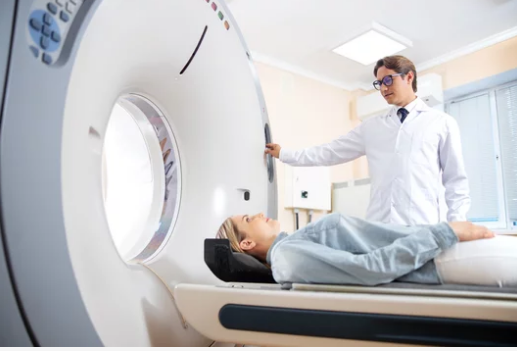Magnetic Resonance Imaging (MRI) is one of the most advanced imaging tools in oncology. It provides detailed, high-resolution images of soft tissues, helping doctors detect tumors, determine their extent, and monitor treatment response. Given its capabilities, many patients wonder: Does every cancer patient need an MRI?
The answer depends on the type of cancer, its stage, patient risk factors, and the clinical questions doctors need to answer. This article explores when MRI is necessary, its advantages, limitations, and how it fits into comprehensive cancer care.
How MRI Works in Cancer Care
MRI uses strong magnetic fields and radio waves to create detailed images of organs and tissues without radiation exposure. Its key roles in oncology include:
- Detection of tumors – Especially in soft tissue structures like the brain, liver, breast, and prostate.
- Staging and mapping – Determining tumor size, location, and spread to guide treatment.
- Treatment planning – Assisting surgeons and radiation oncologists in precise interventions.
- Monitoring therapy response – Evaluating whether chemotherapy, immunotherapy, or radiation is effective.
- Follow-up surveillance – Detecting recurrence or residual disease.
While MRI is invaluable for certain cancers, it is not universally required for all patients.
When MRI Is Usually Recommended
MRI is most beneficial in the following scenarios:
1. Brain and Central Nervous System Cancers
MRI is the gold standard for diagnosing brain tumors, spinal tumors, and metastases due to its superior soft tissue resolution.
2. Breast Cancer in High-Risk Patients
Women with dense breast tissue or genetic mutations (like BRCA1/2) may benefit from MRI alongside mammography for early detection.
3. Prostate Cancer
Multiparametric MRI (mpMRI) helps detect clinically significant lesions, guide targeted biopsies, and assess local spread.
4. Liver Tumors
Dynamic contrast-enhanced MRI is crucial for distinguishing benign liver lesions from hepatocellular carcinoma, especially in patients with chronic liver disease.
5. Soft Tissue and Bone Cancers
MRI provides detailed images for planning surgery, monitoring response to chemotherapy, and assessing surrounding tissue involvement.
When MRI May Not Be Necessary
Not all cancer patients require MRI. In some cases, other imaging modalities are more appropriate:
- Lung Cancer: CT scans are more effective for detecting small nodules and evaluating the lungs.
- Early-stage cancers with clear biopsy results: MRI may not add significant information.
- Screening in low-risk populations: Routine MRI screening is rarely recommended for cancers without risk factors.
- Cancers in organs better visualized with other imaging: Gastrointestinal tumors often require endoscopy or CT.
Doctors typically evaluate the patient’s cancer type, stage, and risk factors to determine whether MRI will meaningfully impact diagnosis or treatment.
Advantages of MRI for Cancer Patients
- No radiation exposure: Safe for repeated follow-ups.
- Superior soft tissue contrast: Ideal for organs like brain, liver, prostate, and breast.
- Functional imaging capabilities: Techniques like diffusion-weighted imaging (DWI) provide insight into tumor biology.
- Pre-surgical planning: Helps surgeons assess tumor margins and involvement of critical structures.
Limitations of MRI
- Cost and accessibility: MRI is more expensive and less available than other imaging techniques.
- Longer scan times: Some protocols take 30–60 minutes, which may be challenging for certain patients.
- Not always sensitive for certain cancers: Lung nodules, small gastrointestinal tumors, and calcified lesions may be missed.
- Claustrophobia and patient tolerance: Some patients cannot comfortably complete the scan without sedation.
Integrating MRI Into Personalized Cancer Care
MRI is most effective when used strategically:
- High-risk patients: Those with genetic predispositions or dense tissue.
- Complex cases: When detailed anatomical information is essential for surgery or radiation.
- Monitoring treatment response: To evaluate effectiveness of therapy or detect recurrence.
- Complementary imaging: Often used alongside CT, PET, or ultrasound for a complete assessment.
Decisions about MRI should be individualized, based on clinical need rather than a one-size-fits-all approach.
Conclusion: MRI Is Valuable but Not Universal
While MRI is an extraordinary tool for cancer detection, staging, and treatment planning, not every cancer patient needs an MRI. Its use should be guided by cancer type, stage, patient risk factors, and the clinical question at hand.
Strategically integrating MRI into a patient’s care plan ensures the benefits of high-resolution imaging are maximized, unnecessary procedures are minimized, and cancer care is tailored to each individual’s needs.
Also Read :
